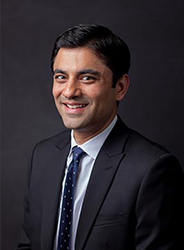
Dr. Kiran Joshi, Co-Lead of Cook County Department of Public Health
COVID-19 has laid bare health inequities we have long known are rooted in historical racism, injustice, and discrimination. The COVID-19 pandemic is the most significant public health challenge of our lifetimes. To bring this epidemic to an end, we must vaccinate as many people as possible. On one hand the math is simple: we must get 80 percent or more of the population vaccinated.
Please click here to view Cook County Department of Public Health’s Statement on Equity
But doing so equitably, and ensuring that no one is left behind, will require effort and resources.
We have begun by identifying 32 Priority Communities – the 32 most vulnerable communities in our suburban Cook County jurisdiction. This was based on a number of factors, including barriers to medical care, socioeconomic factors and the prevalence of chronic conditions which put people at risk for COVID-19. Ensuring the residents of our most vulnerable communities are vaccinated is the right thing to do and also ensures that everyone is protected.
We have identified and operationalized a number of strategies that will help us get to equitable vaccine uptake:
- Community-assisted scheduling, through which we reserved appointments at mass vaccination sites for community groups, who are trusted messengers, to schedule vaccinations for their clients and patients.
- Vaccines on the go, our mobile programs, through which we have provided over 20,000 doses of vaccine at over 140 pop-up clinics throughout the suburbs.
- Priority PODs, or points of distribution, designed specifically for those who live and work in the 32 priority communities. Longer than pop-ups. Mr. Rocha will speak to other ways we are looking to advance equity at the mass vax sites.
During the course of our vaccination program, we have launched a number of vaccine sites across the suburbs. I’ve always been struck by how the socially distanced crowds are a cross section of suburban Cook County residents. This diversity illustrates that we are all in this together and that we must all work together to end the pandemic.
Let me walk you through a couple of the displays we have for you to demonstrate some early progress and our ultimate goal. First, we have a chart that lists our 32 Priority Communities – you saw a version of this last month. We’ve listed the percentage of residents in all those municipalities who have received at least one dose of the vaccine and alongside that, the percentage that is fully vaccinated.
The numbers highlighted in green are at or above county average When we announced the Priority 32, only 3 of the 64 measures were at or above the county average. Today, 10 of the 64 measures are average or better. That’s progress, but it’s just a start.
We are seeing recent steady gains in the communities served by the Priority POD in Summit, a pilot which opened last Tuesday. So we’re watching Bridgeview, Chicago Ridge, Hodgkins, Justice, McCook, and Summit closely to assess our initial success at the Summit Priority POD and we are assessing sites for future Priority PODs as well. Looking at the Bar Chart, you can see how we are measuring progress. What you see here are two sets of numbers – Number one is the percentage of the vaccinated population overall and Number two is the percentage of the overall population of that group.
So, for example, the Hispanic/Latinx population comprises 19 percent of suburban Cook County’s population, but only 10 percent of the vaccinated population – a clear issue. The simplest way to illustrate success in equity would be to have each pair of bars be even, showing that all populations were being vaccinated according to their proportion of the overall population. Equity takes hard work and reaching these levels will test us, but we have the system, the people, the processes and the desire to do this right and I’m confident we will.
Please click here to view Cook County Department of Public Health’s Statement on Equity

